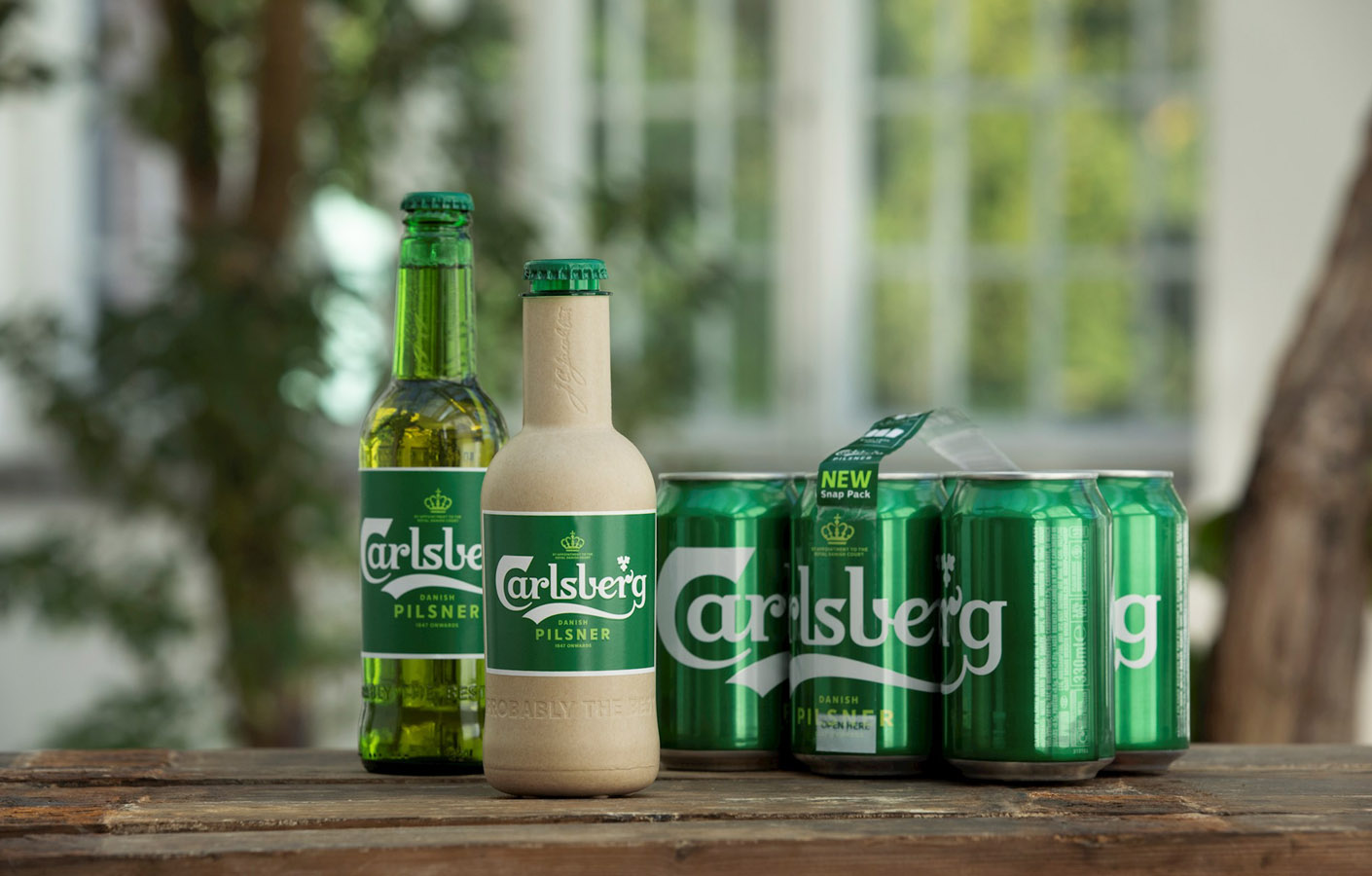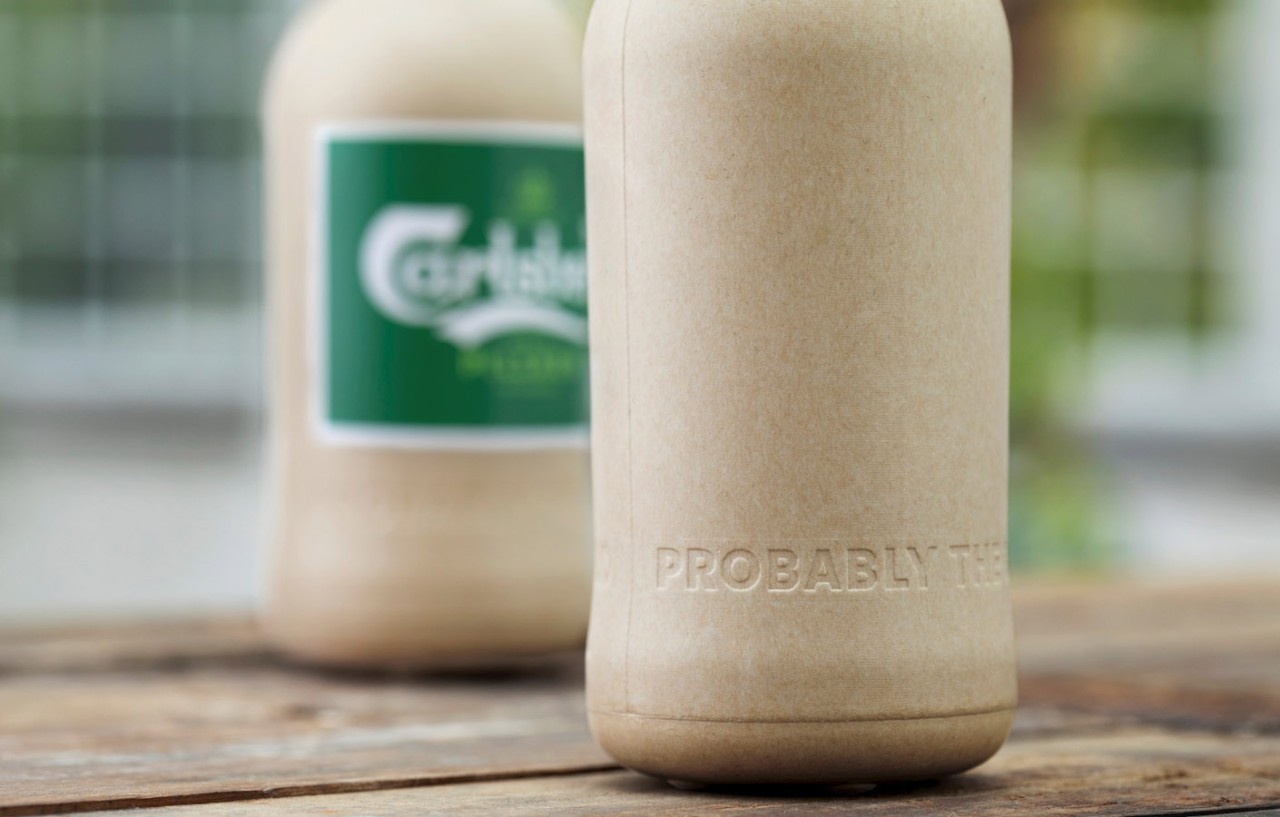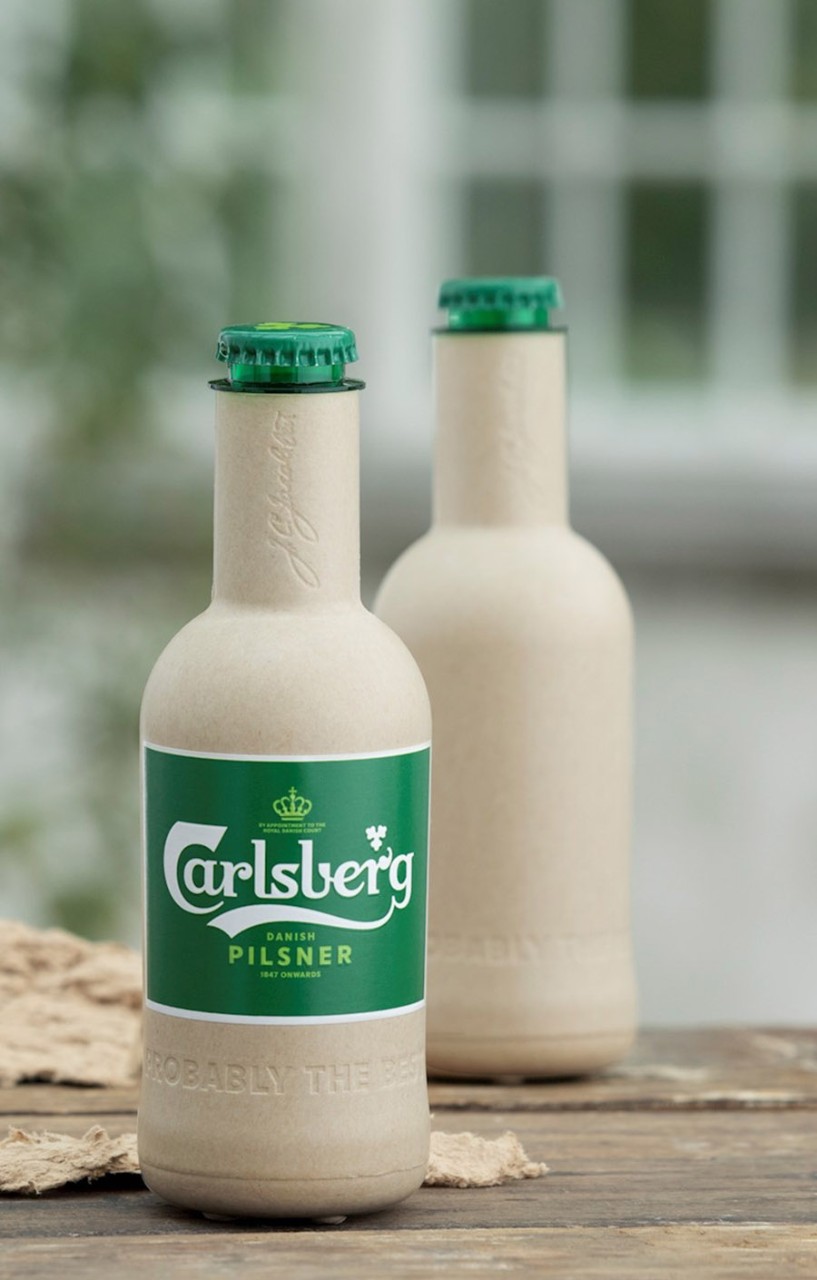
Will Carlsberg’s Green Fiber Bottle become reality?
Consumers’ concern about their environmental impact has grown consistently in the past five years. In response, brands are investigating alternative packaging solutions to reduce their environmental impact. For Carlsberg Group, part of that mission is its Green Fiber Bottle project. The Future Laboratory speaks to Myriam Shingleton, Carlsberg’s vice-president of group development, about the progress the brand is making to create a viable paper bottle.
With nine in 10 food and drink retailers declaring in a recent survey by Tetra Pak that climate change is affecting their packaging choices, brands across the industry are seeking alternative materials and sustainable packaging solutions. For the past five years, the Carlsberg Group has been searching for a better bottle. This wouldn’t replace its traditional glass bottles, but would offer the similar low-CO2 sustainability credentials of glass and maybe even some additional benefits for consumers, such as being lighter. The experimentation with new packaging for its alcohol products began in 2015, when it announced its Green Fiber Bottle concept – a collaboration with packaging companies EcoXpac, BillerudKorsnäs and post-doctoral researchers from the Technical University of Denmark to develop a beer bottle made from sustainably sourced wood fiber. The first physical prototype of the bottle, produced in 2016, showed what such a bottle might look like, but at the time, the company had still not figured out issues like creating a feasible barrier for containing carbonated drinks.
In October 2019, at the C40 World Mayors Summit in Copenhagen, Carlsberg unveiled its next iteration – a paper bottle that could actually contain beer – which delegates at the conference got to drink out of. This version of the bottle tested two different types of polymers to determine which might offer a better barrier. But the ultimate aim for Carlsberg is to create a bio-based bottle that doesn’t use a polymer at all, thereby reducing the company’s reliance on fossil-based fuels in its packaging.
In our conversation with Myriam Shingleton, vice-president of group development at Carlsberg Group, we discuss the appeal of a paper bottle and the challenges of bringing it to the mainstream market. For Shingleton, the Green Fiber Bottle initiative is not about replacing all other forms of packaging that the company uses, but rather offers the beginning of a conversation on alternative materials for Carlsberg to invest in in the future.


Carlsberg revealed its initial Green Fiber Bottle concept in 2015. Why did the company decide to go on this journey?
We are driven by our constant pursuit of doing things better. I think it’s in Carlsberg’s DNA. This project is a manifestation of our pursuit to do things better and our continued effort to reach the targets and ambitions in our sustainability program, Together Towards ZERO. In 2017, the company committed to achieving zero carbon emissions at its breweries and reducing its overall supply chain carbon footprint by 30% by 2030. Our vision, as formulated all the way back in 2015, still stands. We want to challenge ourselves and create the world’s first bio-based beer bottle made from natural resources.
What were the challenges of creating a bottle out of paper?
We had to take a step-by-step approach in the R&D process toward the vision. In the prototypes, we used two different polymer materials, as there are no technical solutions available now that can ensure that the bottle can contain beer at the strict quality levels we require. The barriers are thinner than that of a normal PET bottle, given that the fiber shell provides structural strength to the bottle, enabling a much smaller barrier. It’s a step-by-step approach, but the vision remains to make a fully bio-based and recyclable beer bottle without any polymers. At present, we are evaluating and testing the two prototypes.
What is the appeal of creating a paper bottle when we already have glass, an endlessly recyclable alternative?
We have no plans to replace refillable glass bottles. The bio-based paper bottle we are developing is an alternative, which will have a very low total environmental impact when produced at scale, due to the new energy and efficiency focus of the technology used in the production. Since it is a bio-based material, it will have a lower CO2-impact than the conventional materials used for carbonated drinks.
Many people think that paper coffee cups are eco-friendly, but a lot of them cannot be recycled because of their barrier. How does the 2019 concept bottle address the problem of the barrier?
A significant amount of money has been invested over the past three years to solve this, but it is not only a matter of capital, it is primarily a matter of technology. To date, we have not been able to identify a biodegradable barrier that lives up to the requirements for beer. The two prototypes revealed in 2019 have either a thin rPET film barrier or a thin PEF bio-based film barrier, enabling the bottle to meet the high standards required to contain beer.
We took an important step in 2019 toward creating the world’s first paper bottles made from sustainably sourced wood fibers, but innovation takes time, resources and brain power, and we are delighted that three other like-minded companies have now joined us as part of Paboco’s Paper Bottle Community. We are taking the next steps with the Coca-Cola Company, Pernod Ricard’s Absolut Vodka and L’Oréal. We are now, together, evaluating and testing the two prototypes. This step is already in progress.
Why would consumers reach for a paper bottle over a glass bottle or an aluminum can?
Consumers should see it as a bio-based packaging alternative alongside our other bottles and cans, combining state-of-the-art impulse drying technology and materials science to enable the production of a strong yet, light fiber-based paper bottle with a very low total environmental impact, including CO2, when produced at scale.
We have found a real demand for more sustainable and environmentally friendly packaging. If it has the same price as traditional packaging, consumers choose the sustainable alternative. We are basically trying to help our customers to live more sustainable lives by introducing a range of packaging innovations, which will minimize the environmental impact of our beers, while moving quality to an even higher level.
What will it take to bring a paper bottle to the mainstream?
What we have said is that we are on a journey toward doing things better, offering great beer products while reducing their environmental impact. In 2015, the Green Fiber Bottle was just part of that vision, but now we are able to pour beer from a reusable paper bottle and keep the beer fresh. The idea remains to create a fully biodegradable and bio-based bottle, but it will probably take a few years before we are able to pilot test this bottle in our markets.








